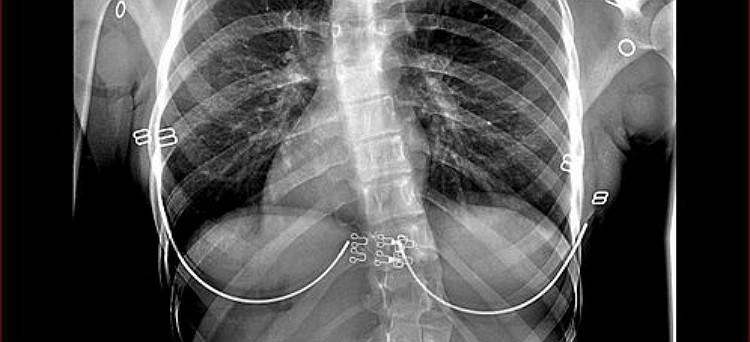A new study from Turkey says that magnetic growing rods release higher levels of metal ions than traditional non-magnetic rods used in the treatment of severe early-onset scoliosis. The report, published in January 2018 by Spine Deformity, chronicles the work of seven Turkish orthopedists who set out to determine the effect on a child’s health of “liv[ing] with metallic implants for a substantial amount of time.”
Turkish Study Suggests Higher Titanium Levels In Magnetic Growing Rod Patients
“Metal ions released from spinal instruments,” the researchers write, “can cause localized debris and distribute systemically to settle on distant organs.” Little is known, however, about the long-term effects of this exposure, or the varying risks that may be posed by different growing rod technologies.

To explore the issue further, the Turkish team enrolled a total of 52 children, with an average age of 10.7 years old, into their study. 15 of the children had received traditional growing rods (GR), while 22 were implanted with magnetically controlled rods (MCGR). A third group of 15 children served as the study’s control group; none of these kids had received growing rods of any sort.
The researchers took blood samples from each of the 52 children for a period of three months, from December 2014 to February 2015. Then, the blood samples were tested for the presence and quantity of four metallic elements frequently used to produce medical devices:
- titanium – the main metal used to produce growing rods, both traditional and magnetically controlled options
- vanadium – a common additive in titanium alloys
- aluminum
- boron
The result? In their findings, the researchers note that both traditional growing rods and magnetically controlled growing rods release titanium particles into a child’s body, but that MCGR may release more of the metal.
Elevated Titanium, Vanadium Levels
On average, children with traditional rods had a titanium level of 7.3 in their blood, while MCGR patients were far higher, at around 10.2. Children in the control group, who didn’t have growing rods, were down by 2.8.
Alongside titanium, the team also found significant levels of vanadium in the blood of MCGR patients. Boron and aluminum levels, however, appeared similar across all three groups, though the researchers couldn’t eliminate the possibility that aluminum levels were higher in growing rod patients.
To conclude their paper, the team wrote, “both [traditional growing rod] and [magnetically controlled growing rod] applications significantly release titanium and possibly aluminum. MCGR further releases vanadium. MCGR possibly releases more titanium than traditional GR.”
Metal Debris From Medical Devices
Most children with early-onset scoliosis, a form of spinal deformity, receive growing rods. Attached to the spine in a surgical operation, the implants help to straighten and stabilize the spine.
After being implanted, medical devices made from metal, including traditional and magnetic growing rods, have been found to release tiny particles of metal into the body. These particles, when they come into contact with non-metal substances, like human body tissue, can become ionized; the atoms lose their electrons, becoming electrically-charged ions.
Metallosis & Spinal Implants
Metal ions can settle on the body tissues directly around the implant or, as the researchers note, migrate far from the site of implantation to land on “distant organs.” In either case, the presence of metal ions in the body often triggers drastic inflammatory responses, as our immune systems attempt to tackle these new “invaders,” according to researchers in the International Journal of Spine Surgery.
Severe cases of metal toxicity can even lead to the development of “pseudotumors,” benign cysts that can interfere with the function of the implants around which they grow. Together, these symptoms are often known by the name of “metallosis.”
Magec Growing Rods
Traditional growing rod models come with a significant down-side. The rods can’t lengthen on their own to follow along with a child’s physical growth. As a results, surgeons will need to perform multiple invasive operations, manually lengthening the rods every six to eight months.
The Magec System was designed to solve this problem. Instead of an invasive operation, surgeons can lengthen Magec growing rods “from the outside,” using a remote control that triggers a high-tech magnet housed in each rod.
Researchers Note Complication Rates
Despite the promise of this new technology, Magec growing rods have been linked to severe complications. As several recent studies have found, Magec growing rods may be more prone to failure than traditional implants. Reports have even emerged of Magec rods breaking apart inside young patients, leading to invasive and costly revision procedures.
Now, we have further evidence that magnetically controlled growing rods may pose increased risks to children, this time in the form of elevated metal levels.
To learn more about this new technology, check out our free 9-page guide to Magec growing rods.






